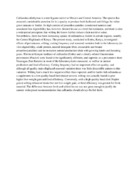| dc.description.abstract | Calliandra calothyrsus is a tree legume native to Mexico and Central America. The species has attracted considerable attention for its capacity to produce both fuelwood and foliage for either green manure or fodder. Its high content of proanthocyanidins (condensed tannins) and associated low digestibility has, however, limited its use as a feed for ruminants, and there is also a widespread perception that wilting the leaves further reduces their nutritive value. Nevertheless, there has been increasing uptake of calliandra as fodder in certain regions, notably the Central Highlands of Kenya. The present study, conducted in Embu, Kenya, investigated effects of provenance, wilting, cutting frequency and seasonal variation both in the laboratory (in vitro digestibility, crude protein, neutral detergent fibre, extractable and bound proanthocyanidins) and in on-station animal production trials with growing lambs and lactating goats. The local Kenyan landrace of calliandra (Embu) and a closely-related Guatemalan provenance (Patulul) were found to be significantly different, and superior, to a provenance from Nicaragua (San Ramón) in most of the laboratory traits measured, as well as in animal production and feed efficiency. Cutting frequency had no important effect on quality; and although all quality traits displayed seasonal variation there was little discernible pattern to this variation. Wilting had a much less negative effect than expected, and for lambs fed calliandra as a supplement to a low quality basal feed (maize stover), wilting was actually found to give higher live-weight gain and feed efficiency. Conversely, with a high quality basal diet (Napier grass) wilting enhanced intake but not live-weight gain, so feed efficiency was greater for fresh material. The difference between fresh and wilted leaves was not great enough to justify the current widespread recommendation that calliandra should always be fed fresh. | en_US |

